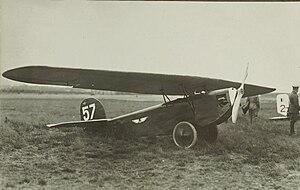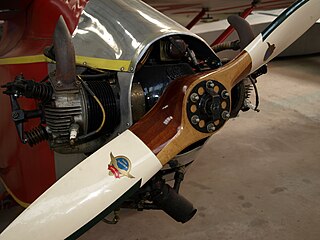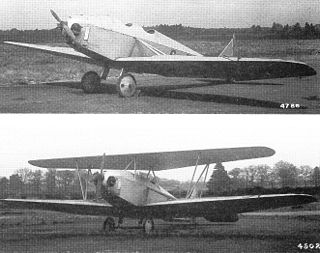
The Parnall Pixie was a low powered British single-seat monoplane light aircraft originally designed to compete in the Lympne, UK trials for motor-gliders in 1923, where it was flown successfully by Norman Macmillan. It had two sets of wings, one for cross-country flights and the other for speed; it later appeared as a biplane which could be converted into a monoplane.
The Beardmore Wee Bee was a single-engined monoplane built only once and specifically for the Lympne two-seat light aircraft trials held in the United Kingdom in 1924. This plane won the major prize.
The RAE Hurricane was a single-seat, single-engined light monoplane designed and built by the Aero Club of the Royal Aircraft Establishment for the 1923 Lympne Motor Glider Competition. It was underpowered with an unreliable engine. Re-engined, it flew in many races, with first place in the 1926 Grosvenor Challenge Cup its greatest success.

The Hanover H.1 Vampyr was a German glider designed by Georg Madelung for the 1921 Rhön gliding competition held at the Wasserkuppe, from 8 August to 25 August 1921. The Vampyr was probably the first heavier than air aircraft to use stressed skin, it has been claimed as the precursor for all modern sailplanes.

The Akaflieg Darmstadt D-7 Margarete, often shortened to Darmstadt D-7 Margarete, was one of the earliest two seat monoplane gliders, designed and built by German university students in 1923.
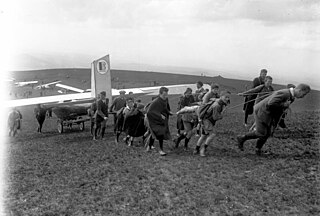
The Akaflieg Darmstadt D-9 Konsul, often shortened to Darmstadt D-9 Konsul, was a high performance, single seat, cantilever monoplane sailplane, designed and built by a German University student group in 1923 for hill soaring.
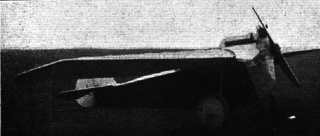
The Carley C.12 was a small Dutch single seat sporting monoplane from the 1920s. There were several developments but only small numbers were produced.

The Pander D was a small Dutch single-seat sport monoplane, an evolution of the Carley C.12 of 1923. Ten were built.
The Driggs-Johnson DJ-1 Bumblebee was a single engine, low power, single seat, parasol wing sports monoplane built in the US in 1924. It and its immediate development the Driggs Dart 1 had some competition successes; the design was further developed into two seat sesquiplanes known as the Driggs Dart 2 and Skylark. In all, about twenty were built.
The RRG Professor was a very early soaring glider and the first to use a variometer for finding thermals. It was designed by Alexander Lippisch in Germany, first flying in 1928. The Professor was widely built by both flying clubs and factories.
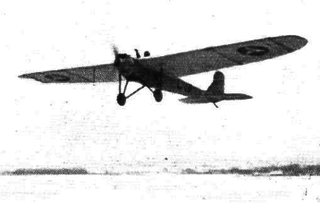
The Daimler L15, sometimes later known as the Daimler-Klemm L15 or the Klemm-Daimler L15 was an early two-seat low-powered light aircraft intended to popularise flying. In mid-career it flew as a glider.

The Daimler L20, later known as the Klemm-Daimler L20, was one of the first light aircraft to be built in significant numbers. A two-seater with an engine of only 20 hp (15 kW), it demonstrated the ability of a small aircraft to cope with flights over the Alps in winter and to make transcontinental journeys of over 36,000 km.
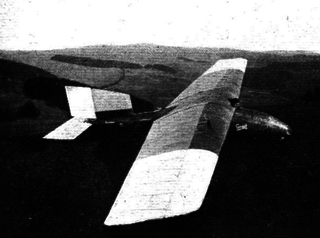
The Akaflieg Hannover H.2 Greif was a 1922 development of the successful Vampyr glider. Though it flew in three successive Rhön (Wasserkuppe) contests, it failed to match the achievements of its predecessor.
Udet Flugzeugbau GmbH was an aircraft manufacturer founded in the summer of 1921 in Munich by Ernst Udet with Henry Hans Herrmann and Erich Scheuermann, funded by the American financier William Pohl, designing and building light sport and commercial aircraft, within the limitations of the Versailles Treaty.
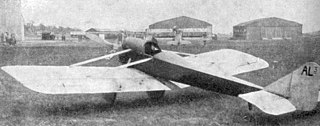
The Lachassagne AL 3 was an experimental 1920s French aircraft designed to test a camber-changing wing meant to extend speed ranges. It was flown only briefly but led to a second design with similar features.
The Peyret Avionette was a low power, single seat French monoplane which won several first-place prizes at the Congrès Experimental contest of 1923.

The parasol wing, single engine Udet U 8, sometimes referred to as the Limousine, was a three-seat commercial passenger transport designed and built in Germany in 1924. Five were produced and were used by German airlines until about 1928.
The Marais avionette was a single seat, low-powered cantilever monoplane built in France in 1923 to compete in a newspaper-sponsored tour contest. Engine selection problems prevented it from taking part. It was modified into a glider for a later competition but crashed during qualification. It was one of the first aircraft to have a retractable undercarriage.
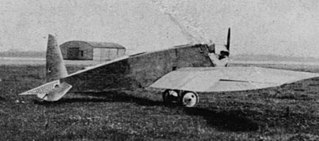
The Caspar C 17 was a mid-1920s German, low power, two seat ultralight aircraft with a cantilever wing of unusually high aspect ratio, flexibly attached to the fuselage to moderate gust effects.

The Działowski D.K.D.1 was the first powered aircraft designed by Stanislaw Działowski. It was a low-power high-wing monoplane with a cabin for one passenger. After attending an aviation exhibition in Warsaw in 1927 it was badly damaged when the engine failed as it left and it did not fly again.
